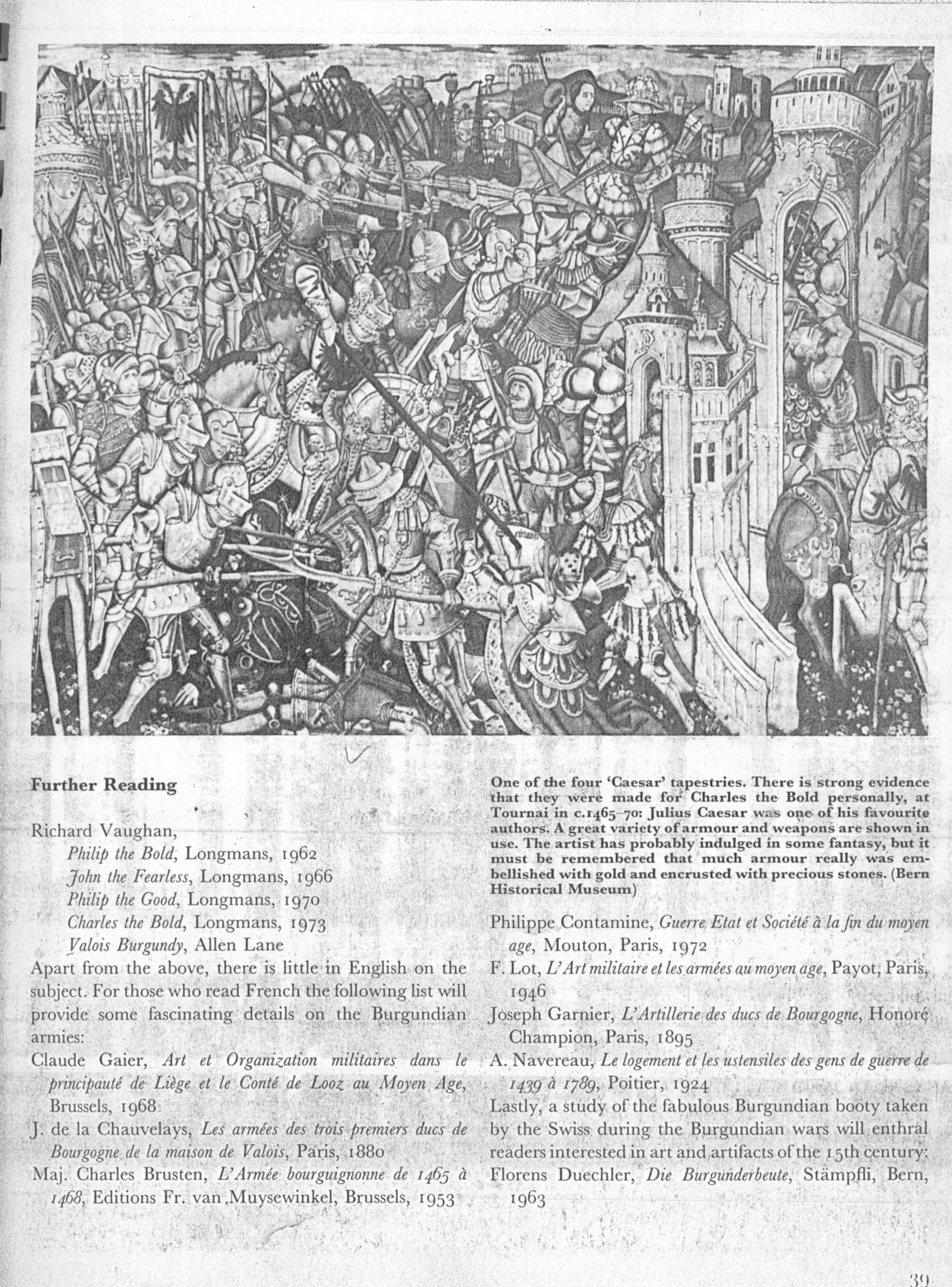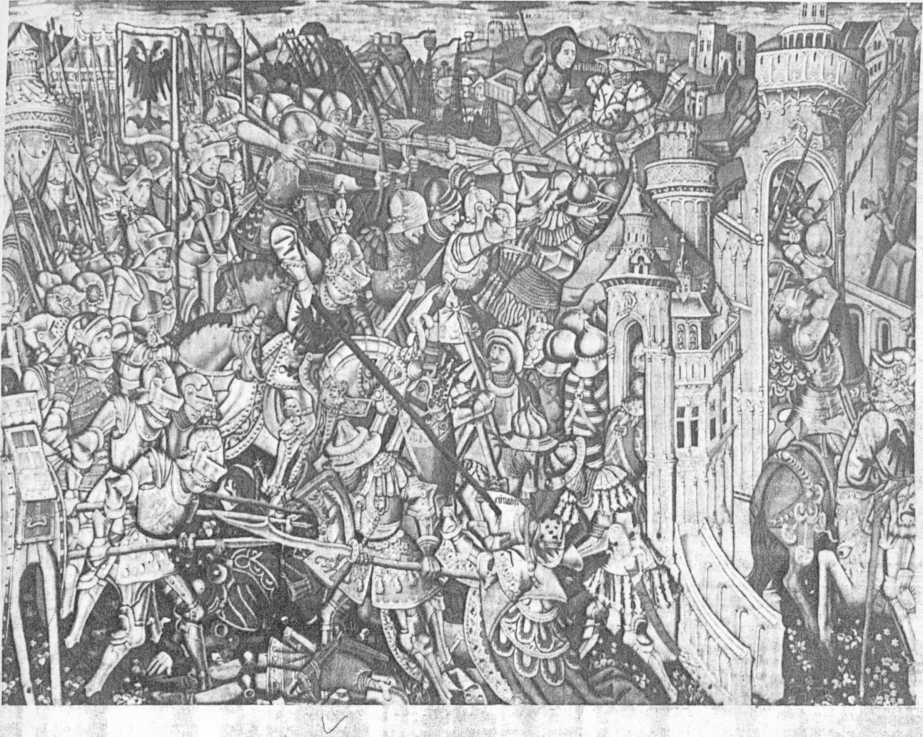m1449


* • ^ '
One of the four ‘Caesar’ tapestries. There is strong evidence that they wcre madę for Charles the Bold personally, at Tournai in c.1465-70: Julius Caesar was one of his favourite authors. A great variety of armour and weapons are shown in use. The artist has probably indulged in some fantasy, but it must be remembered that much armour really was em-bellished with gold and encrustcd with precious Stones. (Bem Historical Museum)
Further Reading
Richard Vaughan,
Philip Ihe Bold, Longmans, 1962 John the Fearless, Longmans, 1966 Philip the Good, Longmans, 1970 Charles the Bold, Longmans, 1973 Valois Burgundy, Allen Lane
Apart from the above, there is little in English on the subject. For those who read French the following list will provide some fascinating details on the Burgundian armies:
Claude Gaier, Art et Organization militaires dans le principaute de Liige et le Conte de Looz au Moyen Age, Brusscls, 1968
J. de la Chauvelays, Les armies des trois premiers ducs de Bourgogne de la maison de Yalois, Paris, 1880 Maj. Charles Brusten, L’Armee bourguignonne de 1465 a 1468, Editions Fr. van .Muysewinkel, Brussels, 1953
Philippe Contarninę, Guerre Etat et Societe a la Jin du moy en age, Mouton, Paris, 1972
F. Lot, U.Art militaire et les armees au moyen age, Payot, Paris,
•946 * . j;.’
Joseph Garnier, L’Artillerie des ducs de Bourgogne, Honorę Champion, Paris, 1895
A. Navereau, Le logement et les ustensiles des gens de guerre de i4jg a r?8g, Poitier, 1924
Lastly, a study of the fabulous Burgundian boóty taken by the Swiss during the Burgundian wars will.enthral readers interested in art and artifacts of the 15th ęentury: Florens Duechler, Die Burgunderbeute, Stampfli, Bern, !963
Wyszukiwarka
Podobne podstrony:
Step Four STEP FOURPost YourJob While there are a couple of different Online sites to hire V.A.s, on
image002 “There has never been a collection like this before” James Blish. . . and there hasn’t. Thi
bc f I 1 BrianThornewasa billionaire —one of the worlds eight richest men. There were only
Krakowiak, which originated in the Kraków region, is one of the five Polish national dancee, the oth
22 PROJECT FOUR • BEADED AMULET PURSES To make the branched fringe. Begin a new thread and exit one
Ask Me Everythingw Why did some dinos have armor? Four types of thyreophorans Scutellosaurus One of
Flower poem Flowers are one of the most beautiful things on earth. Picture yourself in a field fuli
image002 Brian Aldiss is one the most influential -and one of the best - SF writers Britain has eve
image002 Photo: William Rotsler TERRY CARR has been acclaimed as one of the most important editors o
image003 Photo: Jay K. Klein Terry Carr has been acclaimed as one of the major editors of modern sci
więcej podobnych podstron